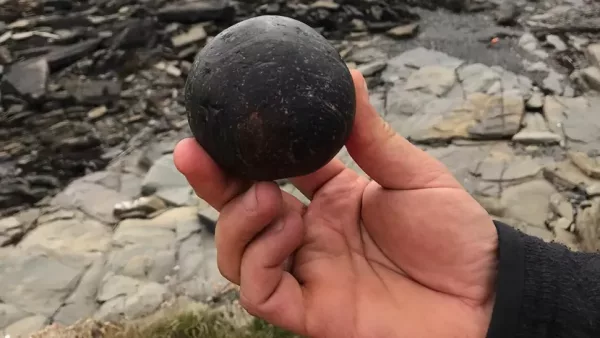Two polished stone balls shaped about 5,500 years ago — linked to a mysterious practice almost unique to Neolithic Britain — have been discovered in an ancient tomb on the island of Sanday, in the Orkney Islands north of mainland Scotland.
Hundreds of similar stone balls, each about the size of a baseball, have been found at Neolithic sites mainly in Scotland and the Orkney Islands, but also in England, Ireland and Norway, Live Science previously reported.
Some are ornately carved — such as the famous Towie ball discovered in northeast Scotland in 1860 — but others are studded with projections or smoothly polished. Most archaeologists now think the stone balls were made mainly for artistic purposes, perhaps to signify a person’s status in their community or to commemorate an important phase of their lives, said archaeologist Vicki Cummings of the University of Central Lancashire in England, who led the excavations of the tomb on Sanday.



